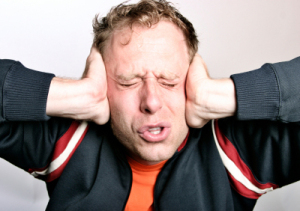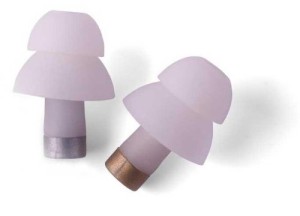Musicians, Protect Your Hearing – Alpine MusicSafe Classics

If there’s one thing a musician needs to be sure they continue to do well, it’s hear. The separation between “good” music and “great” music is often the smallest nuance in sound. It’s the perfect amp tone, the spot on reverb or a very specific amount of gain that musicians often spend years seeking. Unfortunately, in a painful twist of irony, once musicians have spent too much time searching for that sound in a loud environment they gradually lose the ability to detect those nuances because of hearing loss (check out Tinnitus if you want to know more).
Anyone who has been playing for a long time will tell you that protecting your hearing should be a priority. You’d be wise to listen (if you still can).
I’ll state it up front: my preferred hearing protection method is to use an in-ear monitor system. There are plenty of decent ones out there to choose from. If you want to get started with a generic-fit, bargain setup you can check out the Shure SE215 and then go upwards from there until you want a custom-fitted setup (I’ll write about those another time).
What if I want to protect my hearing but can’t use an IEM system?
Not everyone is able to use an IEM system. Lots of people want to use wedge monitors for a variety of reasons. In those cases musicians who want to protect their hearing really only have one option. Earplugs.
But earplugs suck! I know… That’s why I wanted to find unsucked ones. That was far more difficult than one might think.
I need something that attenuates the sound (makes it less intense without losing quality) instead of just blocking it. So your grandpa’s foam woodworking earplugs aren’t an option. It wouldn’t hurt if the plugs were low-profile too so it’s not obvious I’m wearing them.
That’s when I found these…
Alpine Hearing Protection MusicSafe Classic Earplugs for Musicians
These things are the (Rainbow’s) Cadillac of earplugs.
What You Get
- Earplugs
- Two levels of filter (medium and high)
- Earplug insertion tool
- Carrying case
The earplugs themselves are pretty standard fare in that they are the Christmas tree shaped soft rubber that you find on many generic-fit applications. They differ, however, in that they are hollow which allows room for the attenuation filters.
The filters come in two levels: “Medium” which has been fine for me so far; and “High” which seems to be made for people intent on putting their head inside a running jet engine on a regular basis. To change the filters you just pop them into the soft rubber earplug.
The earplug insertion tool is really just a plastic tube that serves as a handle to use to shove the earplugs further into your hear holes. You’ll use it by putting the filter side of the plugs into the tube, lifting your ear a little and shoving the earplug into your ear canal. It helps to twist the plug a little as you work it in so you don’t have to push too hard.
The carrying case is, as silly as it may sound, what set these apart for me at the time of purchase. Losing a plug is one of the most frustrating things that can happen and a nice case keeps it from happening. This one serves as a keychain as well… if you’re that nerdy (I am). So that’s even an added bonus which means you’ll always have your earplugs with your car.
How Well Do They Work?
The real question is whether or not you can be an effective musician while wearing these things, right? The short answer is a resounding “YES”.
While the sound is a tiny bit muffled, it’s far less than the normal “blocked” sound you get with standard earplugs. You won’t use these (or any sound dampening mechanism) while trying to dial in precise tone adjustments on your instrument, but they allow SO much more of the sound spectrum to pass through that I found myself preferring to use the plugs any time I play with a full band.
Interestingly, if you sing these will give you a little bit of a tone advantage. Much like putting your finger in your ear while singing so you can hear yourself over the stage wash these earplugs allow you to hear yourself better. It’s a little weird at first but only takes a few minutes to get used to.
As an added bonus, when someone is talking to you, you can actually hear them. You can leave these things in all night and have conversations during set breaks.
Finally, they almost visually disappear when inserted correctly, so you don’t have Frankenstein bolts sticking out of your ears while you’re trying to have those set break conversations.
The Verdict
While I’ll go back and mention that my ideal scenario is an IEM system, I’ve yet to find a better sound dampening solution than these earplugs. Don’t waste your time buying a dozen other types or messing with the crappy cheap earplugs. Go pick up a set of these and start using them. Now. Do whatever you have to do to avoid losing your hearing.

